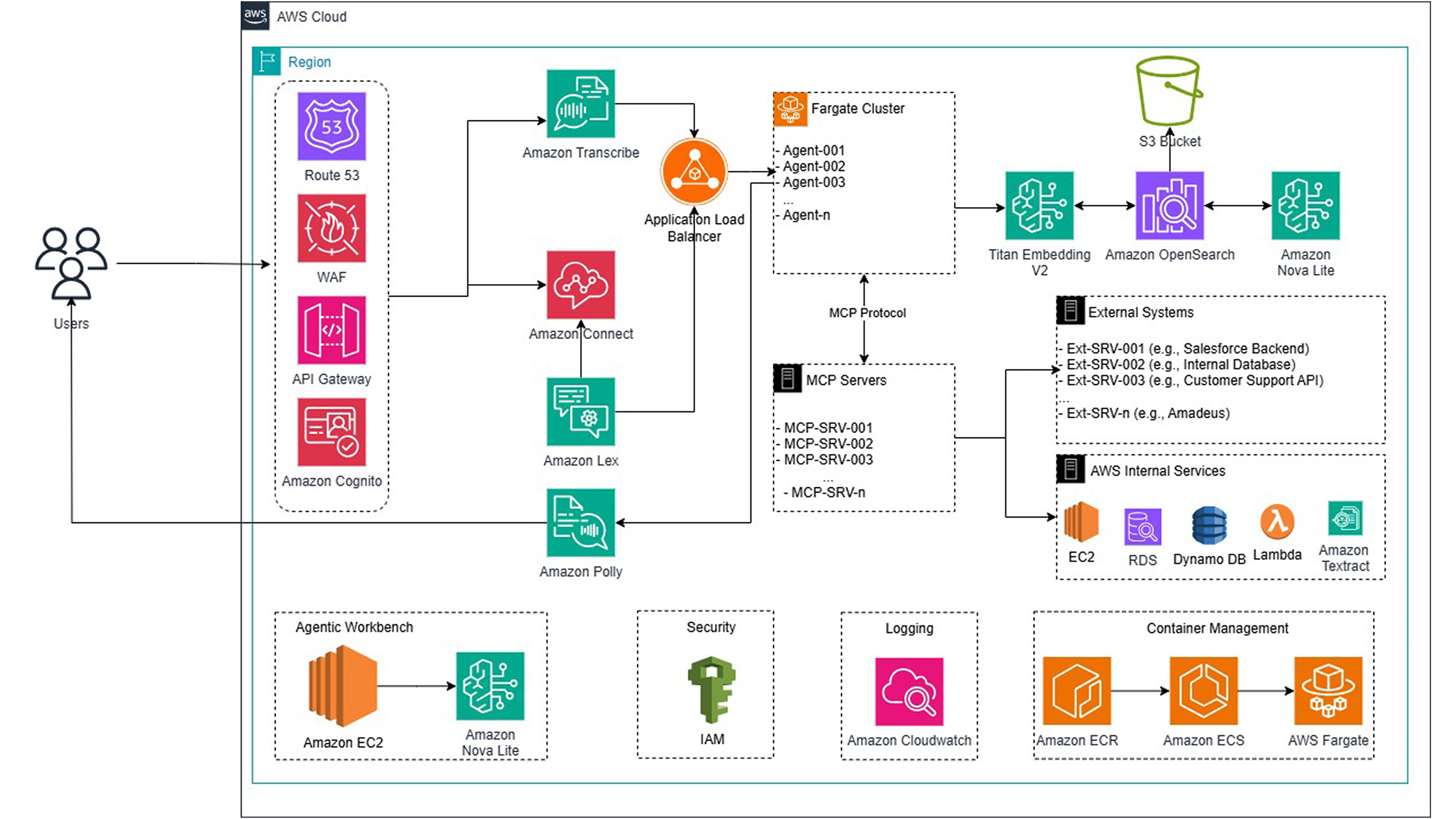What issue can we solve for you?
Type in your prompt above or try one of these suggestions
Suggested Prompt



From Human-heavy to AI-led Contact Centers

Contact center transformation is a hot topic right now — and for good reason.
Across industries like travel and hospitality, banking and financial services, retail, and healthcare, there's a clear push to modernize how customer service works. In many cases, organizations are still tackling problems in silos — solving friction points one app at a time — which only gets you so far. There’s a bigger opportunity here: to completely reimagine the contact center as a proactive, always-on engine for customer value. It's about moving from a world where the human agent is the default, to one where agentic AI takes the lead — with human empathy layered in where it really counts. That’s the shift we’re helping our clients make.
It’s clear that transforming contact centers isn’t just about slapping on some new tech or improving a few metrics. It’s about rethinking the role of customer service entirely — and that starts with a shift in mindset. Here’s the narrative we believe in, and the strategy we’ve seen work on the ground:
- From cost center to experience and revenue driver: Contact centers shouldn't be seen as a necessary overhead anymore. When designed right, they can become powerful experience hubs — places that don’t just solve problems but build loyalty and drive business outcomes. That means creating seamless, connected interactions across channels, encouraging customers to reach out (instead of dreading it), and meeting them with proactive, contextual, and empowering support.
- Design for self-service that actually works: We need to build for first-time resolution and intelligent self-service that customers want to use — not because they’re forced to, but because it’s faster, smarter, and more personal. Empathy isn’t just a human trait either — it can be designed into digital touchpoints through tone, timing, and relevance. This is where trust starts to build, especially when services can anticipate needs and step in before customers even ask.
- Agentic by default: The future is agentic — by design and by default. That means AI agents should be at the forefront of all customer interactions, with humans seamlessly integrated as needed based on the complexity or emotional nuance of the situation. It’s not about replacing humans — it’s about scaling intelligence and empathy together. The key is designing integrated, multi-agent workflows rather than disjointed, point-in-time fixes.
- Support the full spectrum of interaction models: Real transformation solves for every kind of interaction — not just customer to agent, but also agent to agent, human to AI, human-AI-human loops, and even good old human-to-human.
We need a platform and design approach that flexes across all these archetypes without losing coherence or context.
Our solution: Turning the vision into reality
To bring this new contact center paradigm to life, we’ve built a platform specifically designed to help teams design and deliver Agentic AI-powered contact center solutions — at scale and with speed. It's a low-code workbench that makes it easy to architect, build, and evolve intelligent, multi-agent workflows using AWS’s powerful AI and automation technologies.
This platform is grounded in the principles we just talked about:
- It enables the shift from cost center to experience center by giving teams tools to build seamless, proactive, and insight-driven support experiences — from intelligent IVRs to predictive digital assistants.
- It’s designed to put Agentic AI at the heart of every interaction, with humans looped in where it makes sense — enabling agent-to-agent, human-to-agent, and hybrid workflows out of the box.
- It supports design for trust, empathy, and resolution-first outcomes, with prebuilt agents that are purpose-built for common customer service scenarios — and the flexibility to add new ones quickly as needs evolve.
- And it’s built to scale across the full interaction spectrum, with enterprise-grade controls, observability, and compliance baked in.
The platform includes the following key building blocks:
- Pre-built and configured GenAI stack – Ready to go from day one with tuned LLMs, RAG enabled and continuous learning frameworks.
- Pre-configured agent catalogue and workflow templates – So teams can hit the ground running with tested patterns and flows.
- Customer service-specific automation agents – Designed for real-world use cases like ticket deflection, appointment rescheduling, knowledge search, and more.
- Pre-built MCP servers with extensibility – Making it easy to manage context, memory, and persona across agents.
- Automated LLMOps pipeline – For smooth updates, compliance alignment, and change control at scale.
- Enterprise-grade observability and security controls – To meet quality expectations and stay aligned with compliance frameworks from day one.

Figure 01 The Multi-Agentic Platform (MAP) utilizes open source and AWS native technologies, integrating seamlessly with AWS AI services such as Amazon Bedrock and Amazon Nova. Its scalable Agent Mesh ensures efficient task delegation, delivering a robust and enterprise-grade solution.
It’s all built natively on AWS, leveraging services like Fargate, Lambda, Amazon Connect, Polly, Transcribe, Lex, and more — giving you a secure, scalable, and future-proof foundation to transform your contact center into a true experience center.
We’d like to thank the below for their expertise and contributions:
Angela Bartlett, WW Senior Enterprise Architect, Amazon Web Services | Linked
Prashant Yadav, Global Technology Leader – AdTech, MarTech & AI, Amazon Web Services | LinkedIn
Kiran Randhi, Principal Solutions Architect, Amazon Web Services | LinkedIn
To learn more, visit AWS Marketplace: Multi Agentic Platform (MAP) for Customer Services, or reach out for a demo.






